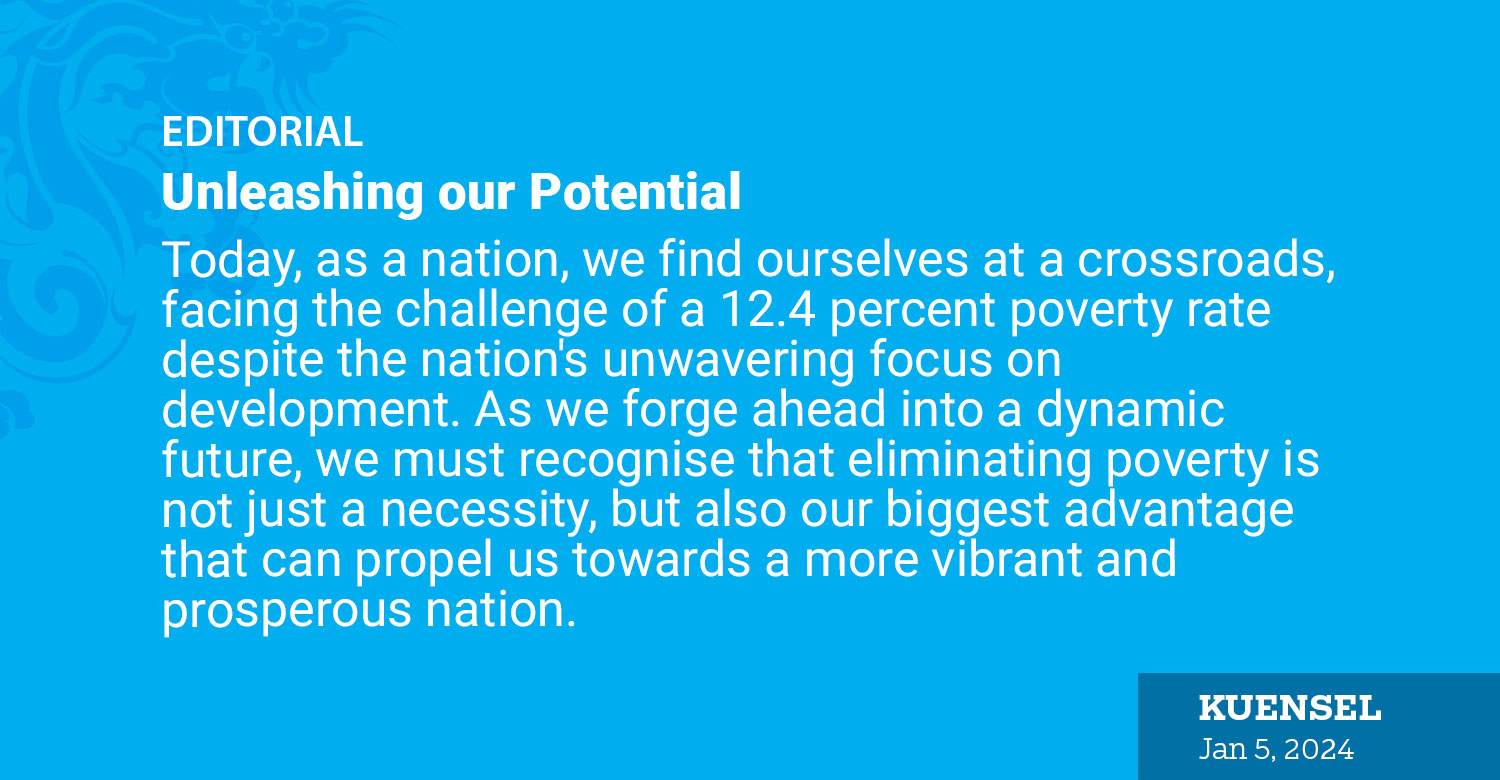Today, as a nation, we find ourselves at a crossroads, facing the challenge of a 12.4 percent poverty rate despite the nation’s unwavering focus on development. As we forge ahead into a dynamic future, we must recognise that eliminating poverty is not just a necessity, but also our biggest advantage that can propel us towards a more vibrant and prosperous nation.
We must accept that our mountainous terrain, though breathtaking, presents challenges to sustainable livelihoods. Understanding the correlation between high poverty and these regions, therefore, is our first step towards transformation. One-size-fits-all approach is insufficient. Each dzongkhag has its unique story, and our policies must mirror the diversity of our landscapes.
Embracing a forward-looking perspective entails shifting our focus from top-down solutions to empowering communities. Engaging our local leaders becomes paramount; they hold invaluable insights into their communities and can guide targeted initiatives. For instance, in agriculturally dependent regions, investing in modern farming techniques and infrastructure can catalyse transformative change. This is not happening despite repeated political promises.
Education is the cornerstone of progress, especially in mountainous areas where access can be challenging. Prioritising education becomes even more critical, as a well-educated population not only breaks the cycle of poverty, but also propels innovation and progress. We need this in our country, today.
Our rural economies thrive on agriculture. Introducing sustainable farming practices aligned with the unique needs of each dzongkhag, therefore, is very important. Supporting farmers with training in organic farming, water conservation, and crop diversification can not only address immediate economic concerns, but also contribute to the nation’s long-term food security.
We have tried all these and more. Why are we struggling is such a poverty rate still? This is the question our elected leaders and policymakers must ask.
Infrastructure development is key to unlocking the potential of regions where poverty persists. The dzongkhags bordering our good neighbours up north and down south are the poorest. For certainly, there must be some explanations as to why this is the case. Further research must enlighten us and advise our policymakers to step in with the right intervention at the right time.
Enhanced roads and transportation networks can connect remote areas to markets, healthcare, and educational institutions, facilitate economic activities, and ensure essential services are accessible to all.
The growth of our local industries is paramount. This will, of course, require support and incentives from the government. Whether it’s handicrafts, traditional art, or eco-friendly tourism, these industries can become engines of economic growth. By preserving and promoting our rich cultural heritage, we not only boost local economies, but also create sustainable livelihoods.
The development in all these areas, unfortunately, is not benefitting the nation. Why?
In this digital age, technology is a bridge that can narrow the geographical gaps. Investing in digital infrastructure to enable online education, telemedicine, and e-commerce is crucial. While progress has been made, more needs to be done to bring essential services to remote areas so that the people have take advantage of economic opportunities. What is inclusive development otherwise?
A thriving nation necessitates a healthy population. Targeted health initiatives focusing on preventive care and awareness, coupled with the establishment of community health centers to address local health challenges, are essential. Healthy communities are better equipped to break free from the shackles of poverty.
Eliminating poverty requires a collective effort. Fostering collaborations between government agencies, NGOs, and the private sector is vital. Pooling resources and expertise can lead to more impactful interventions. Seeking international partnerships aligning with our vision for sustainable and inclusive development can amplify our efforts.
We just need to do a lot more. There is the danger of progress remaining just on the paper otherwise.


